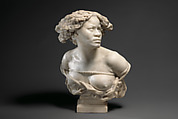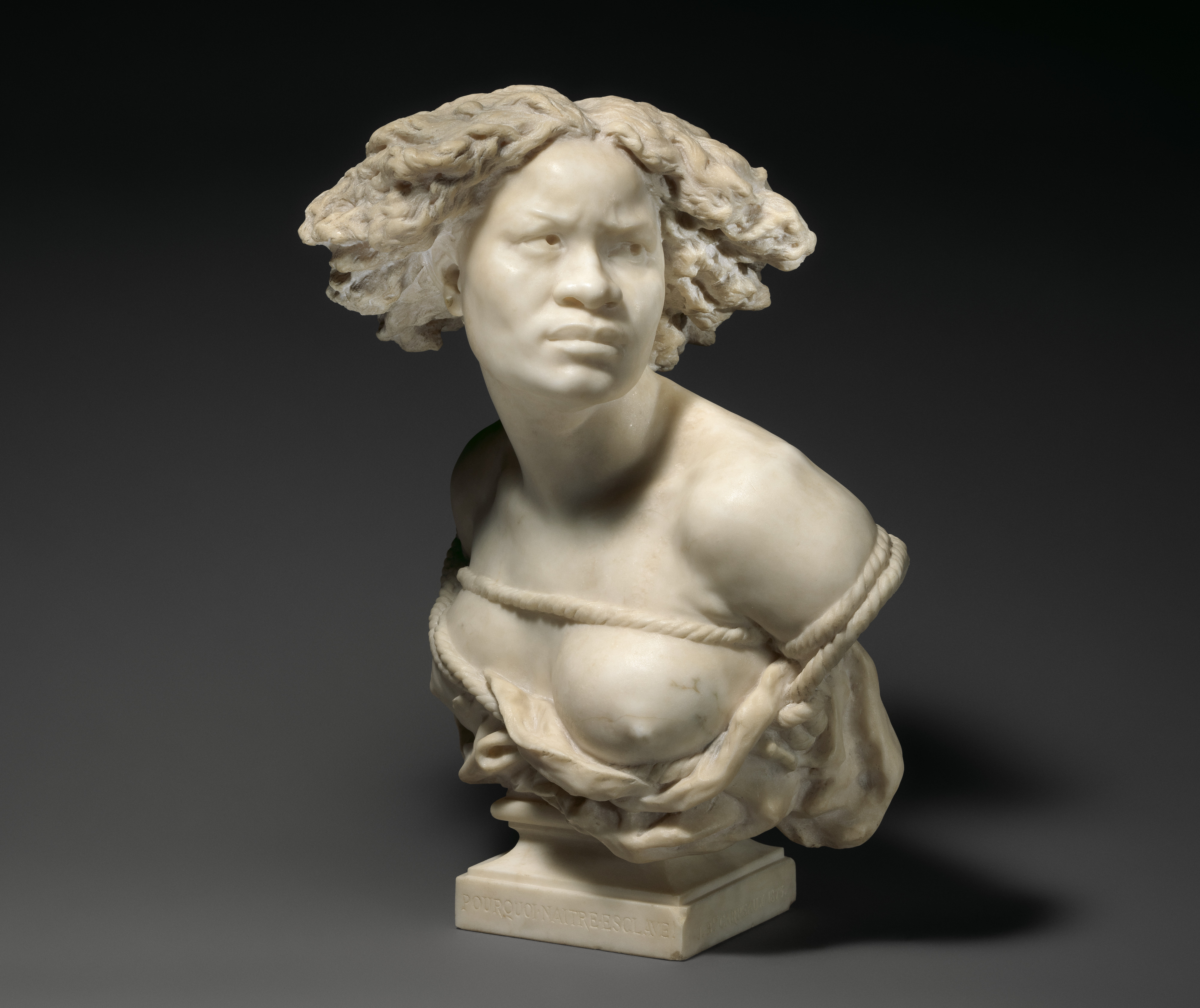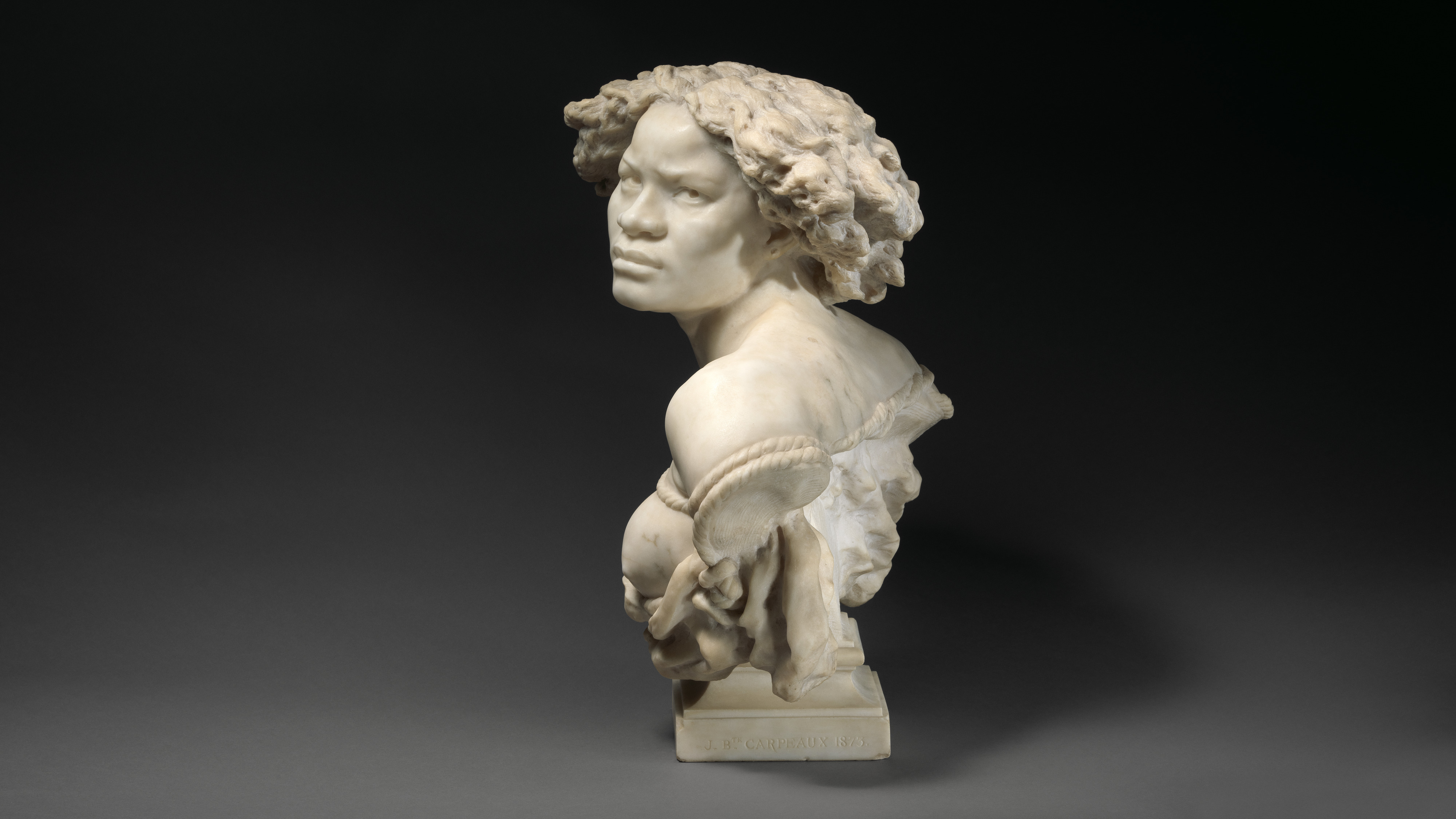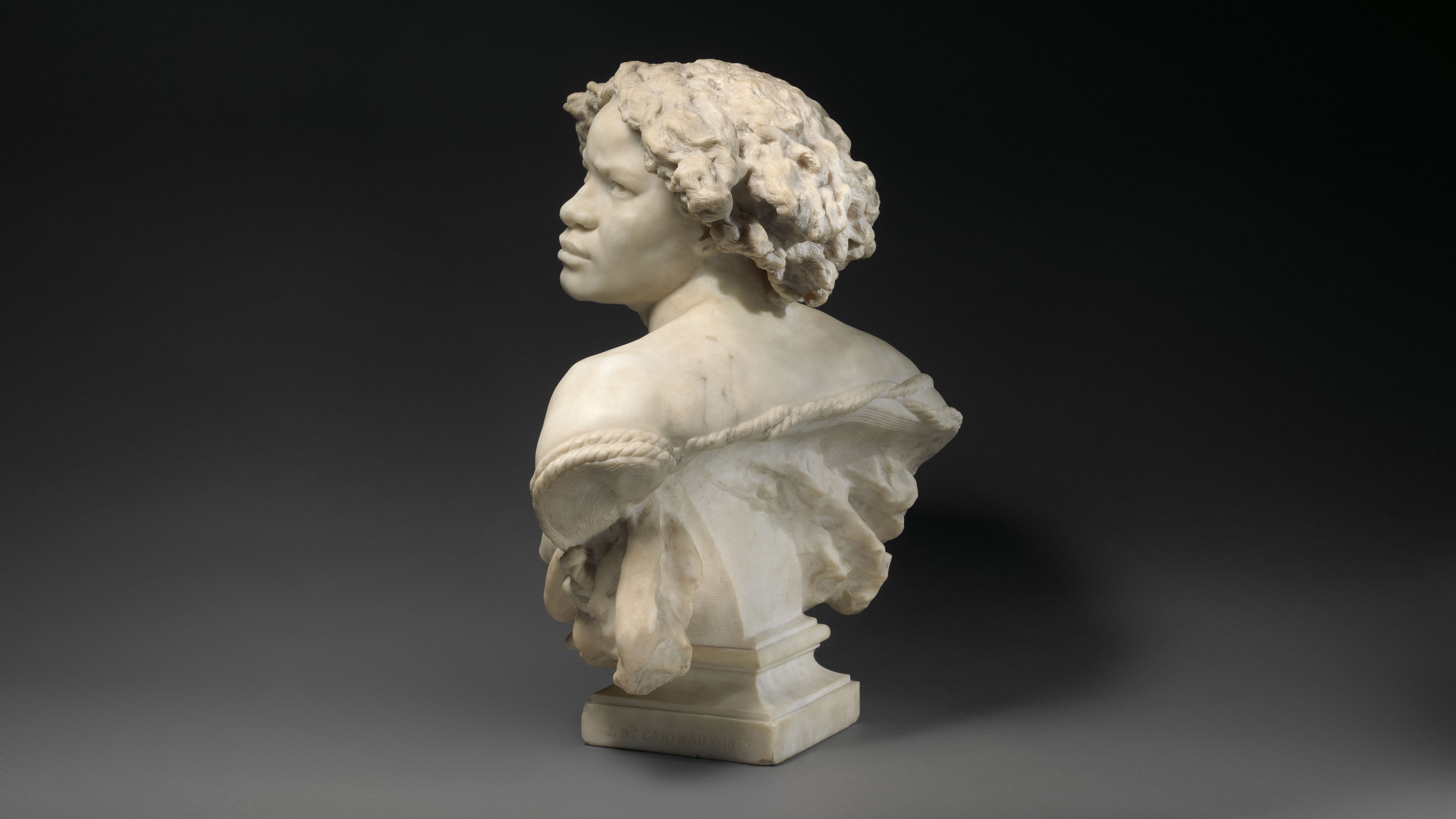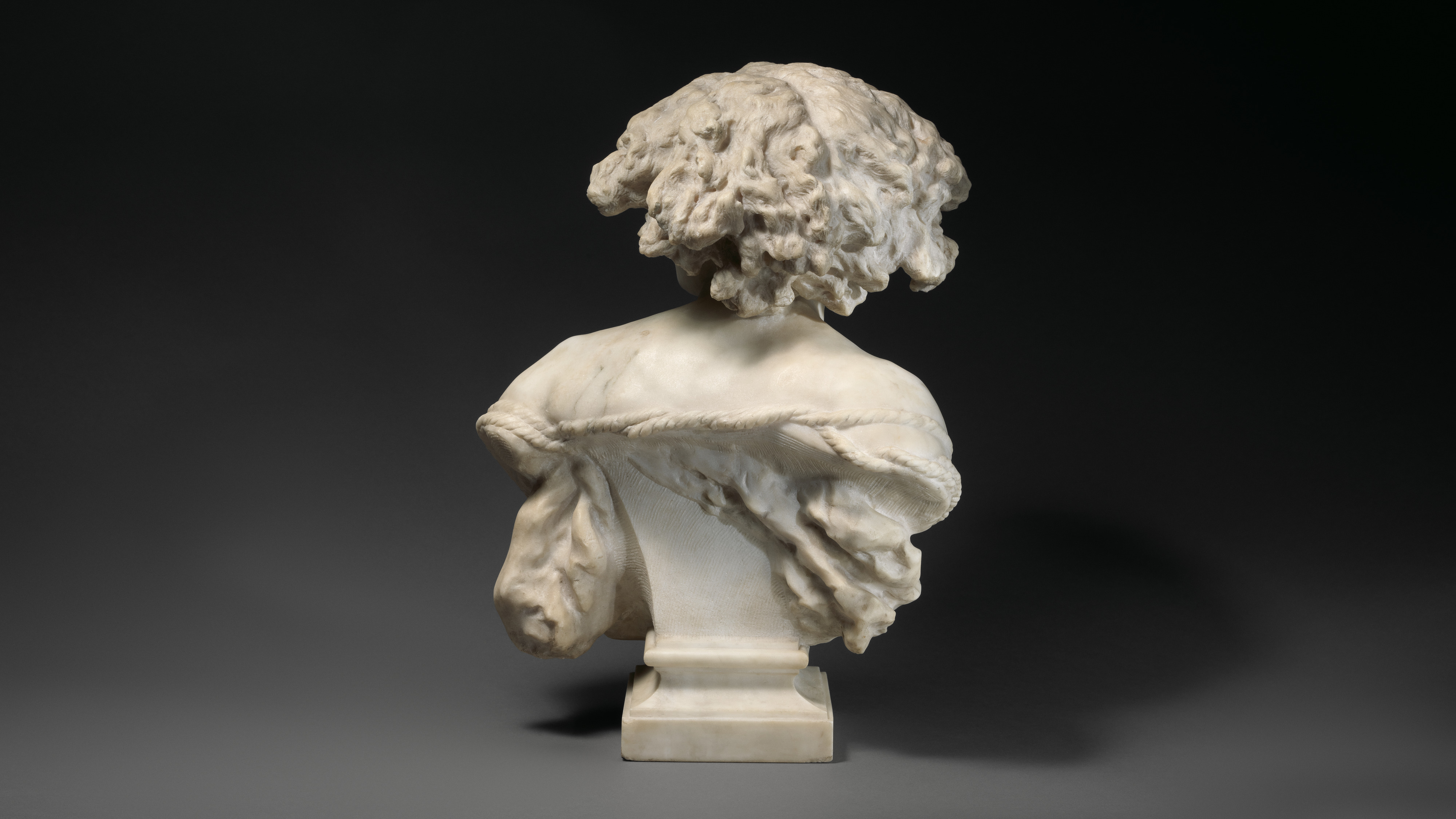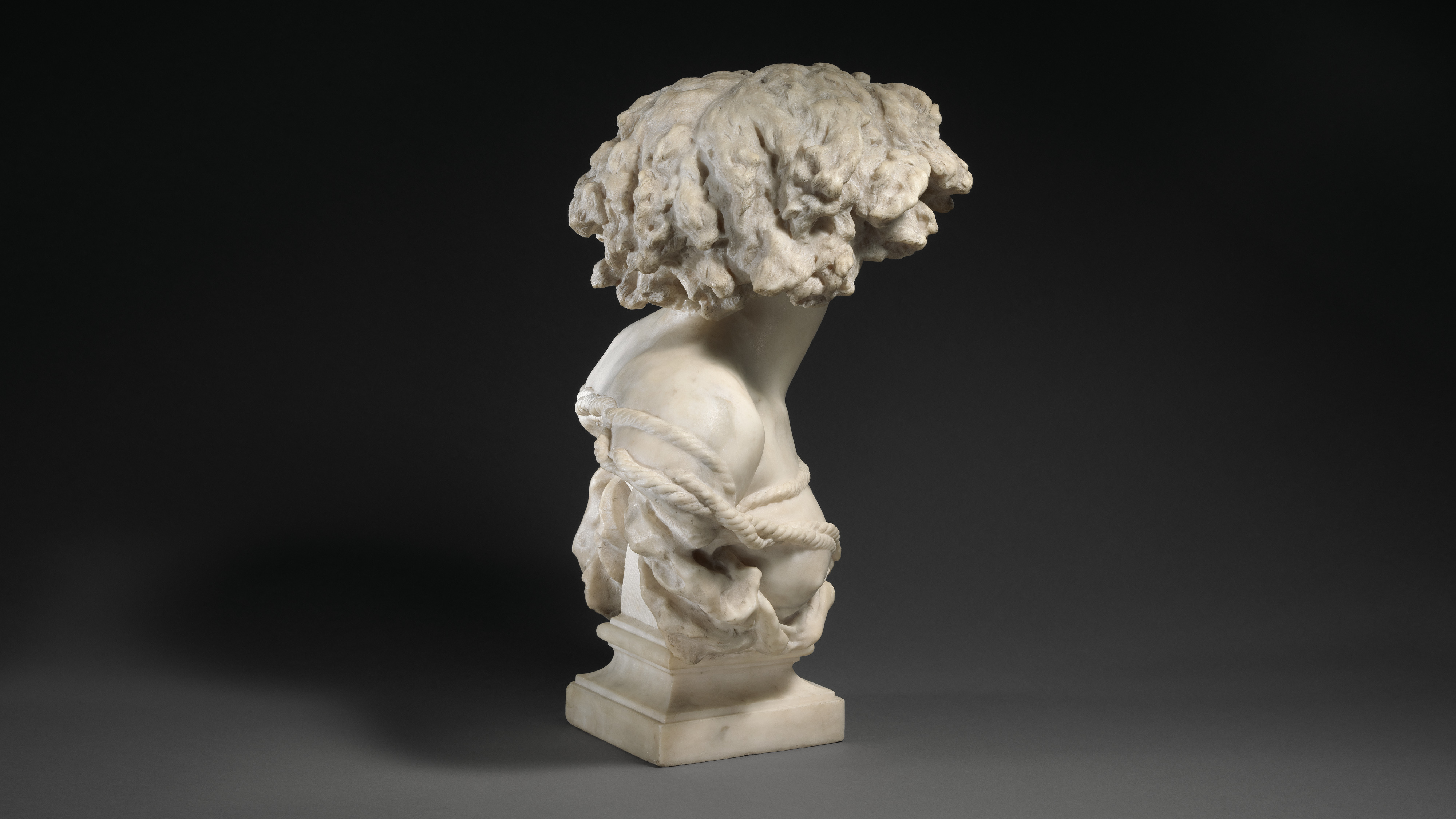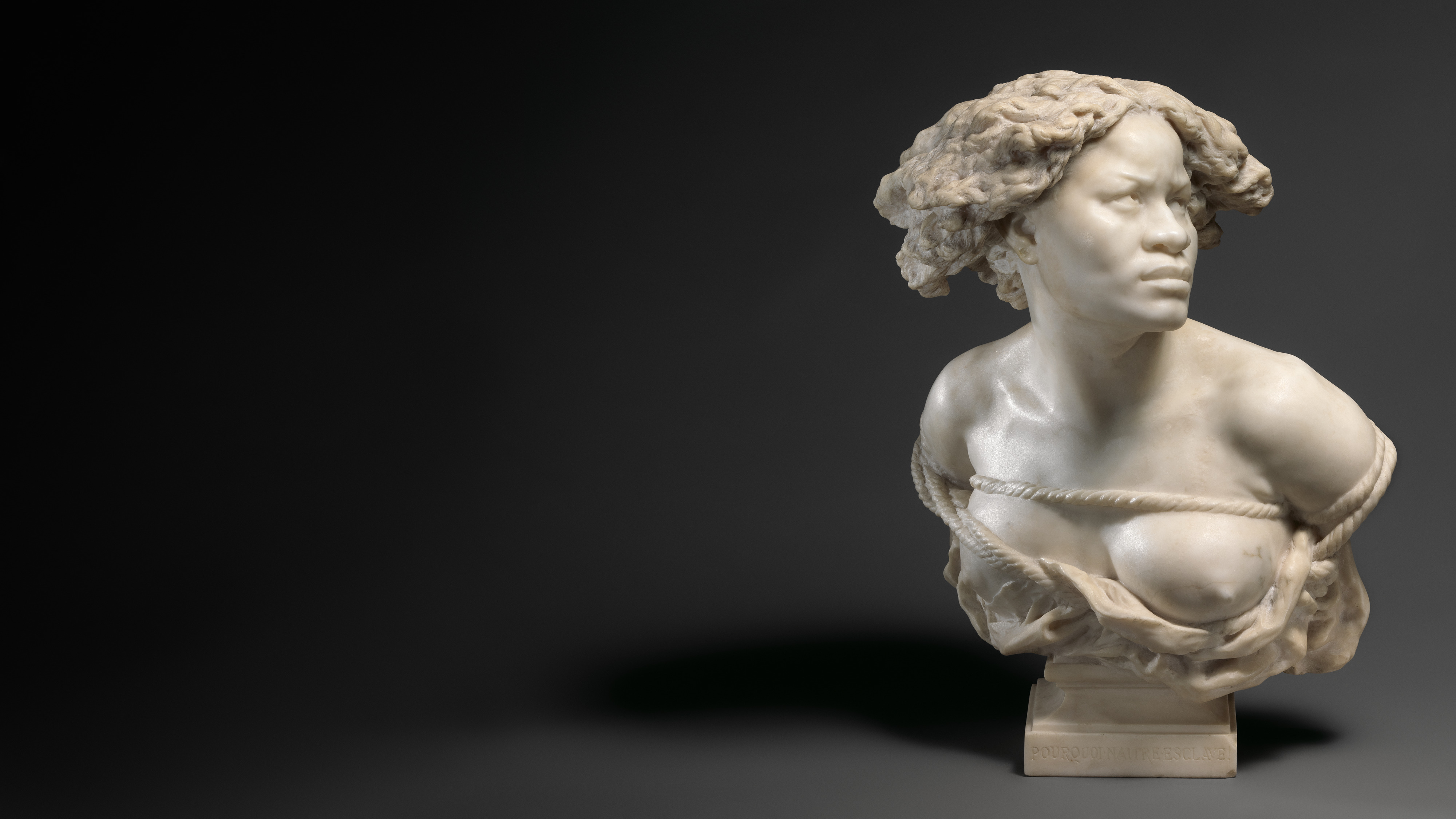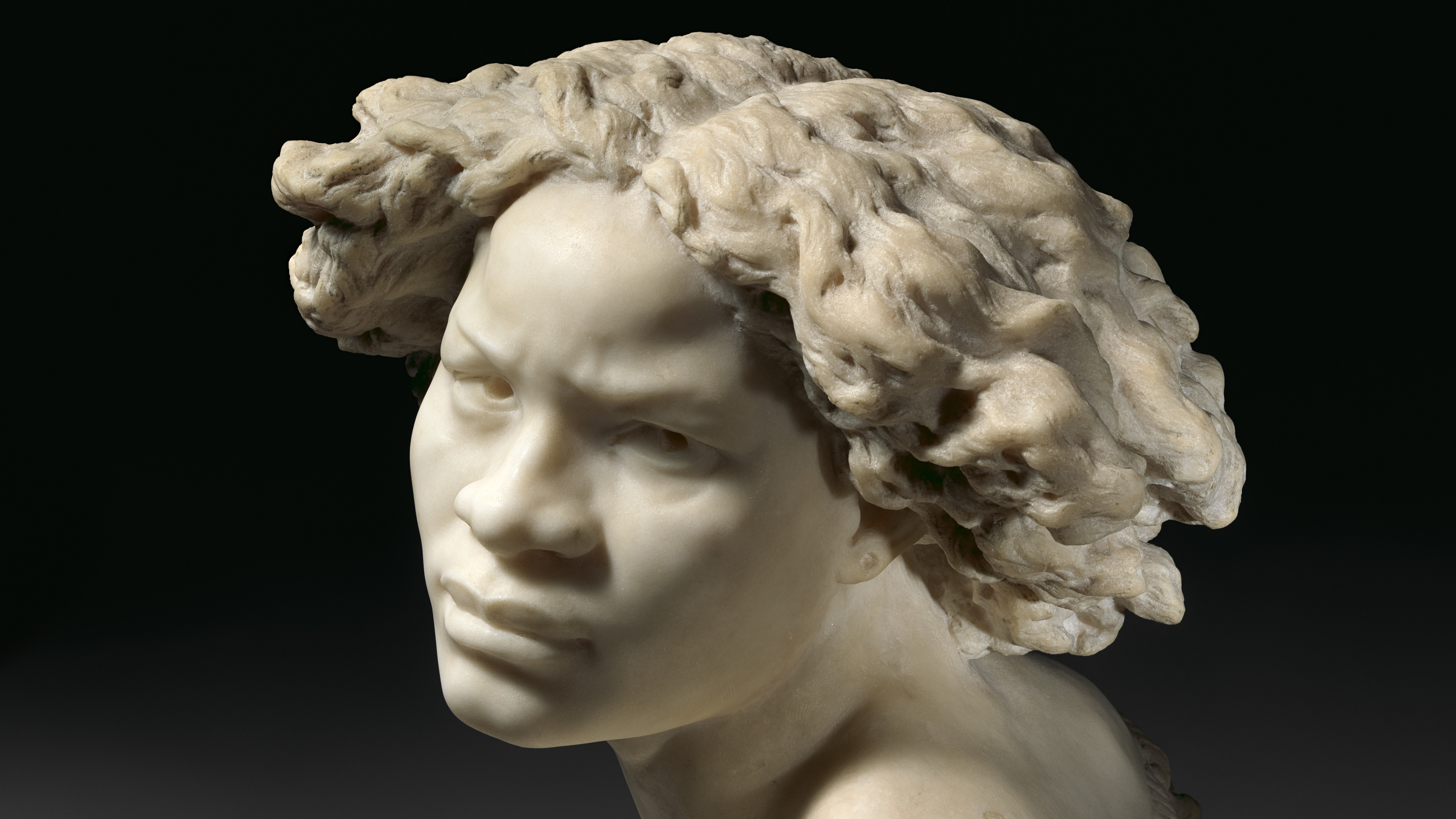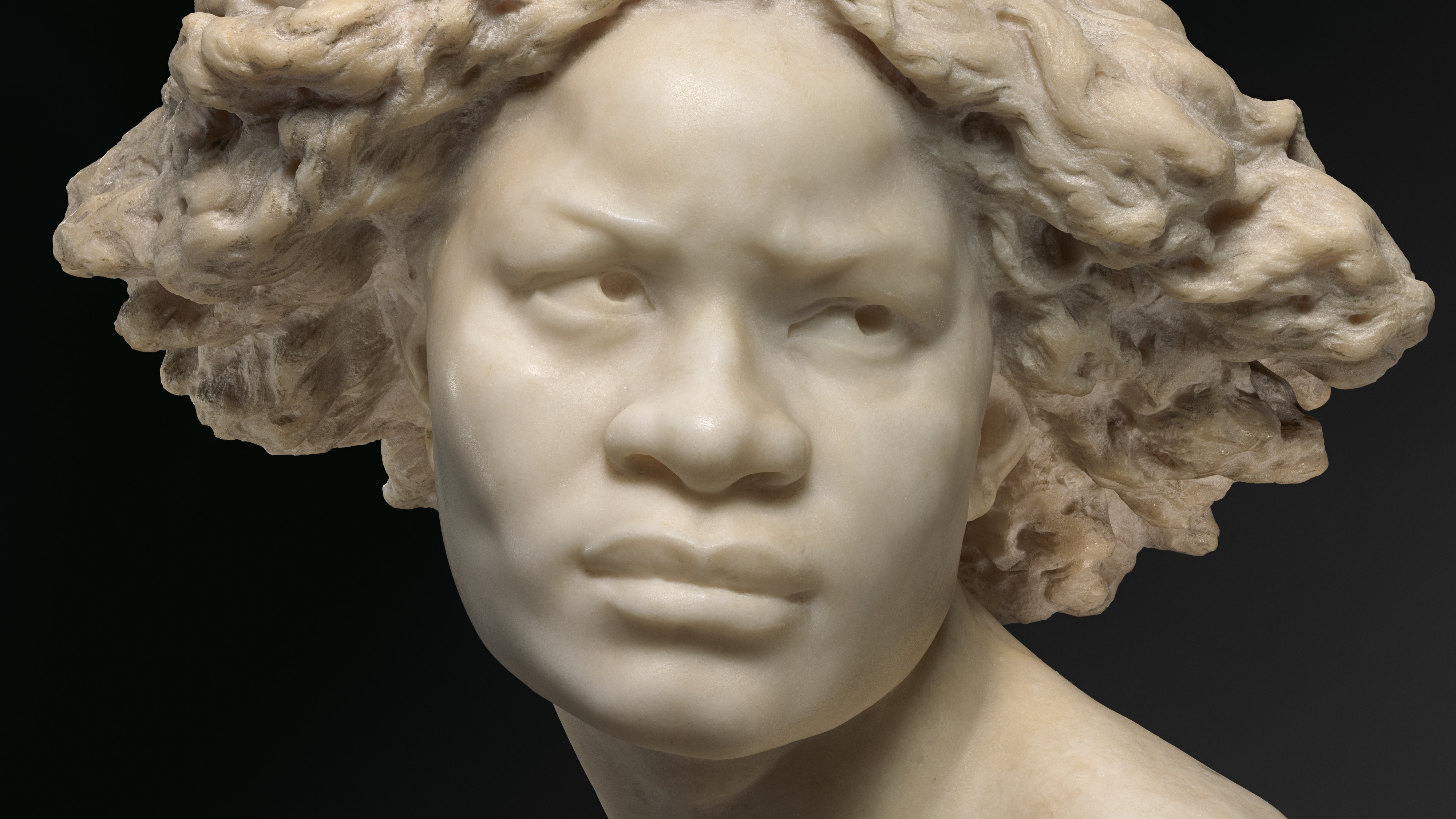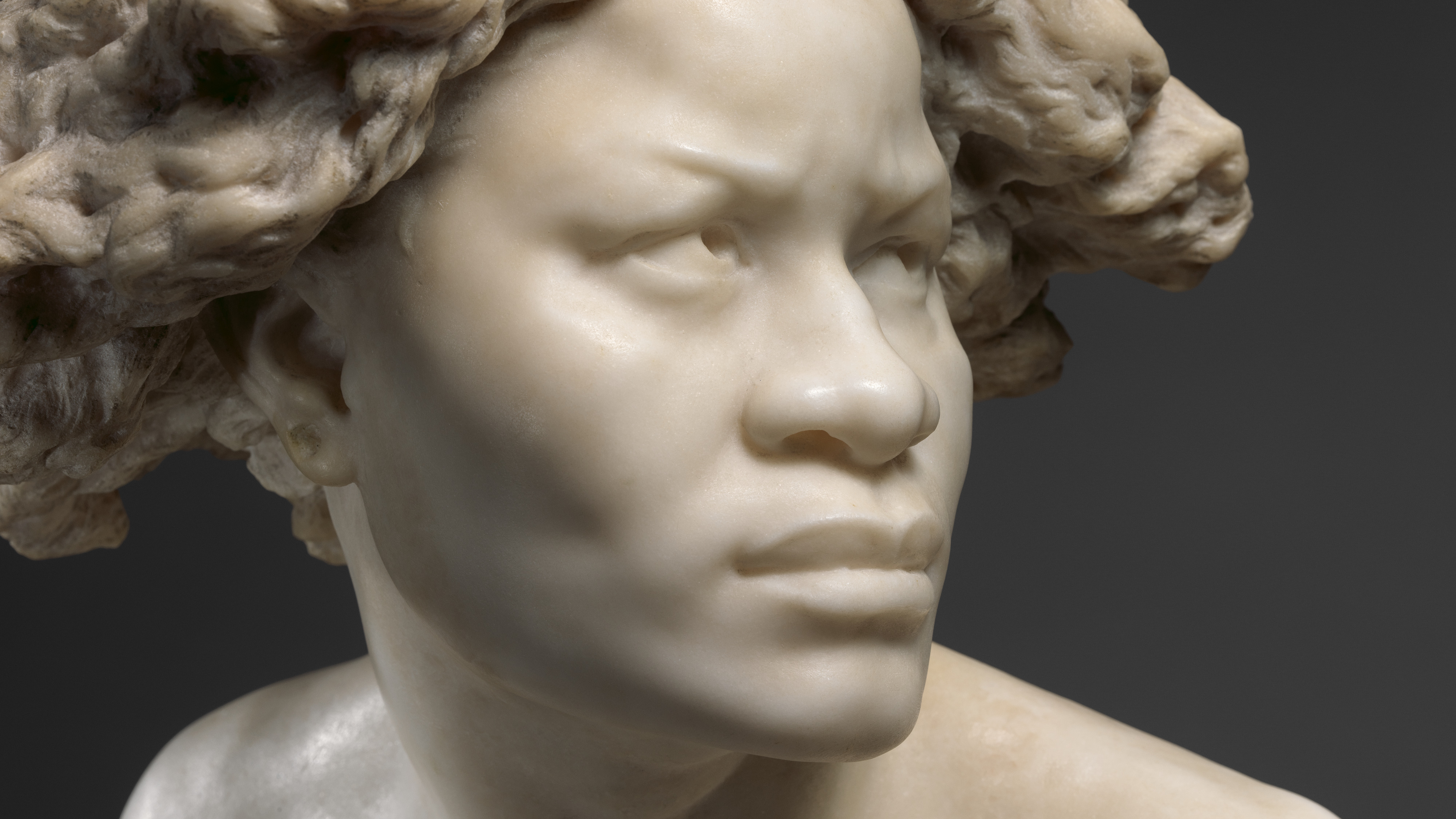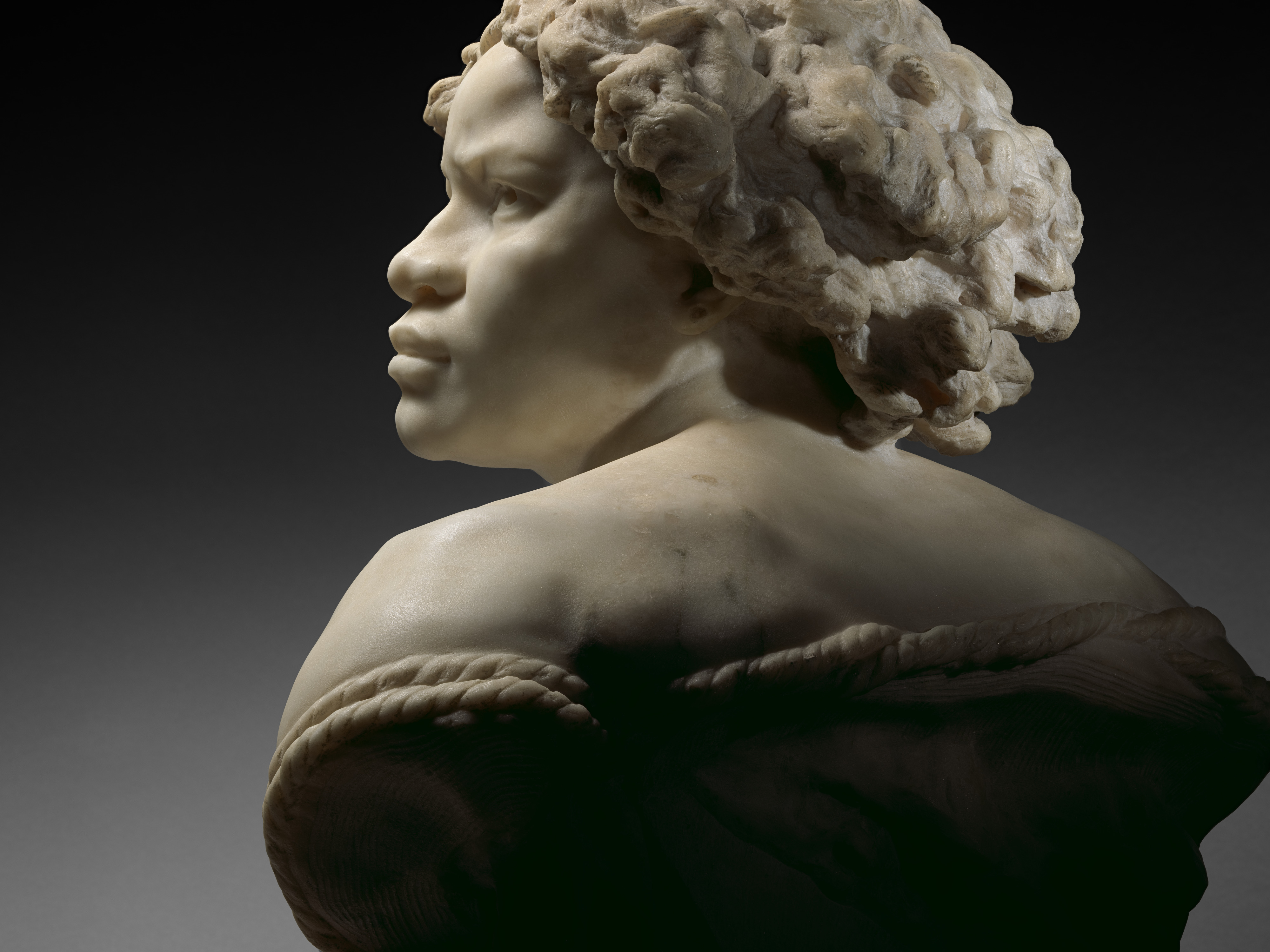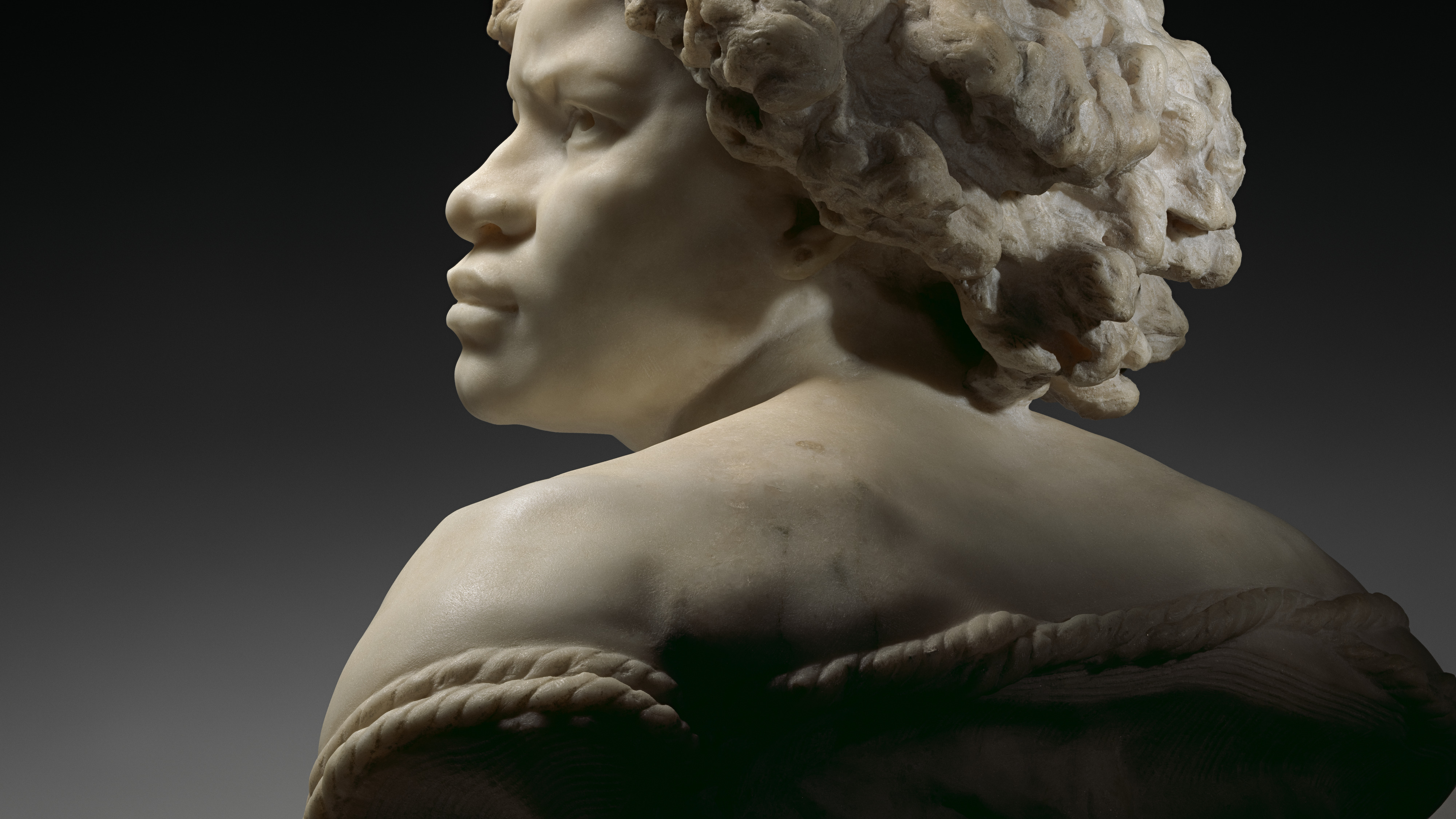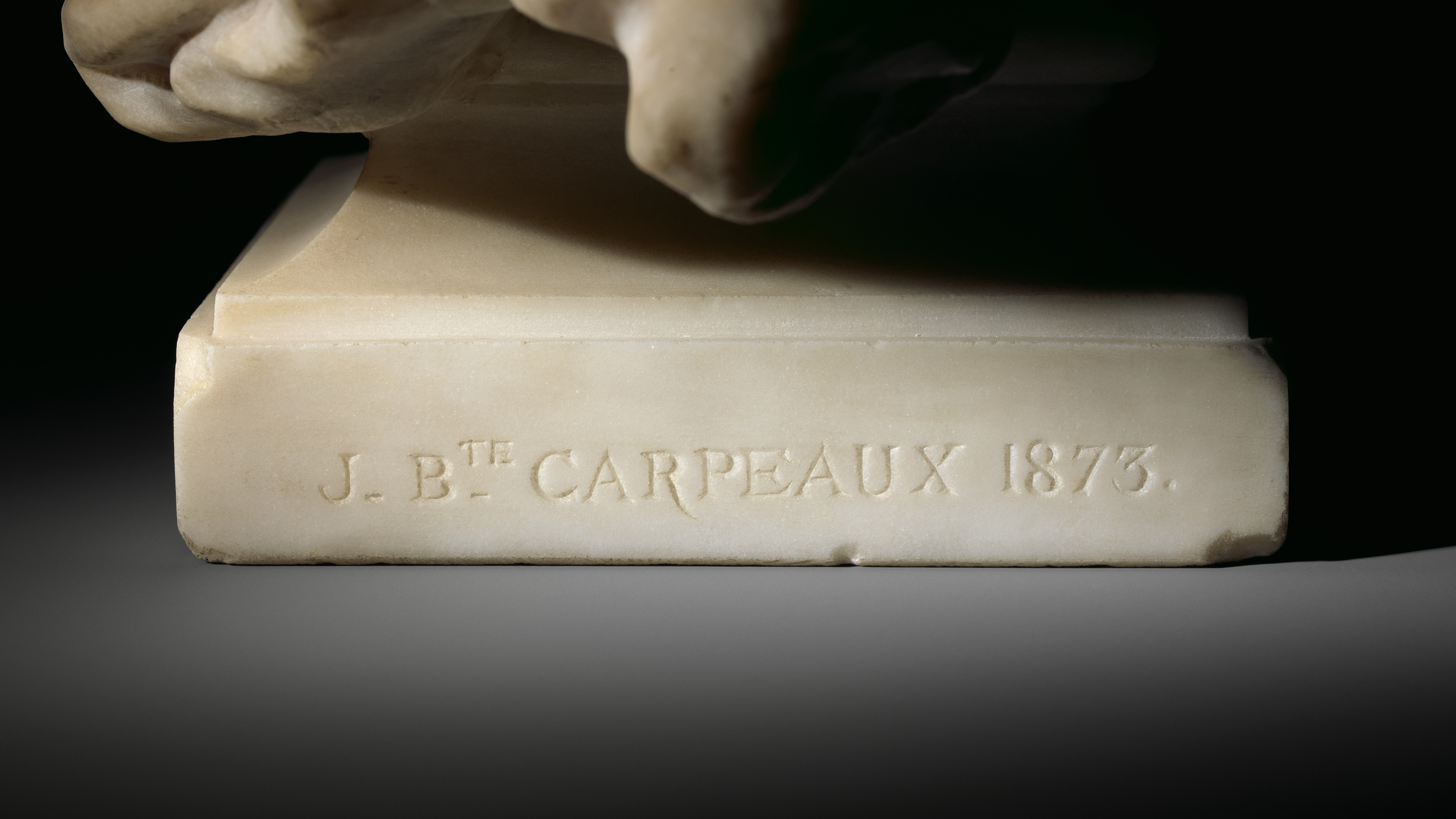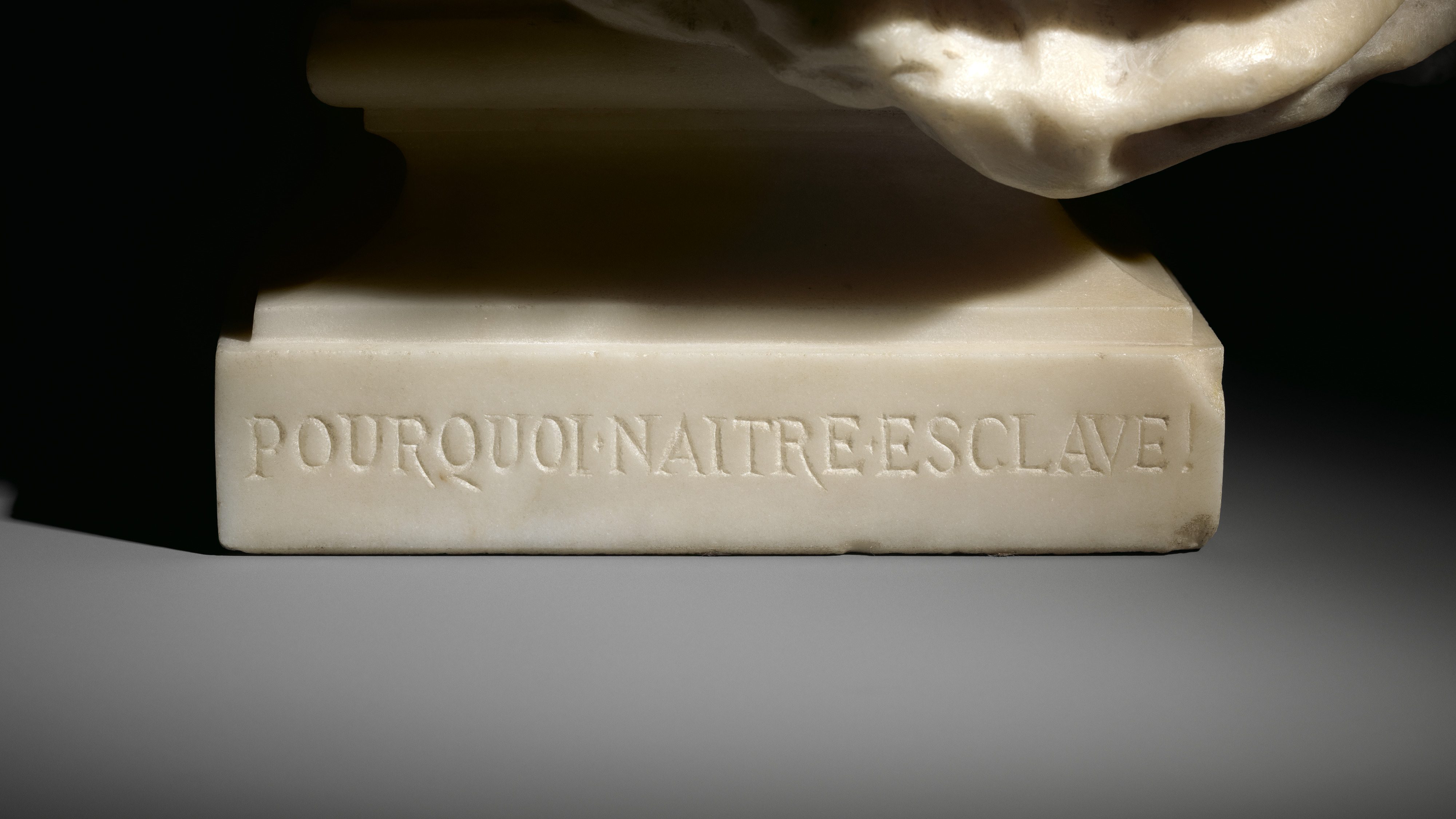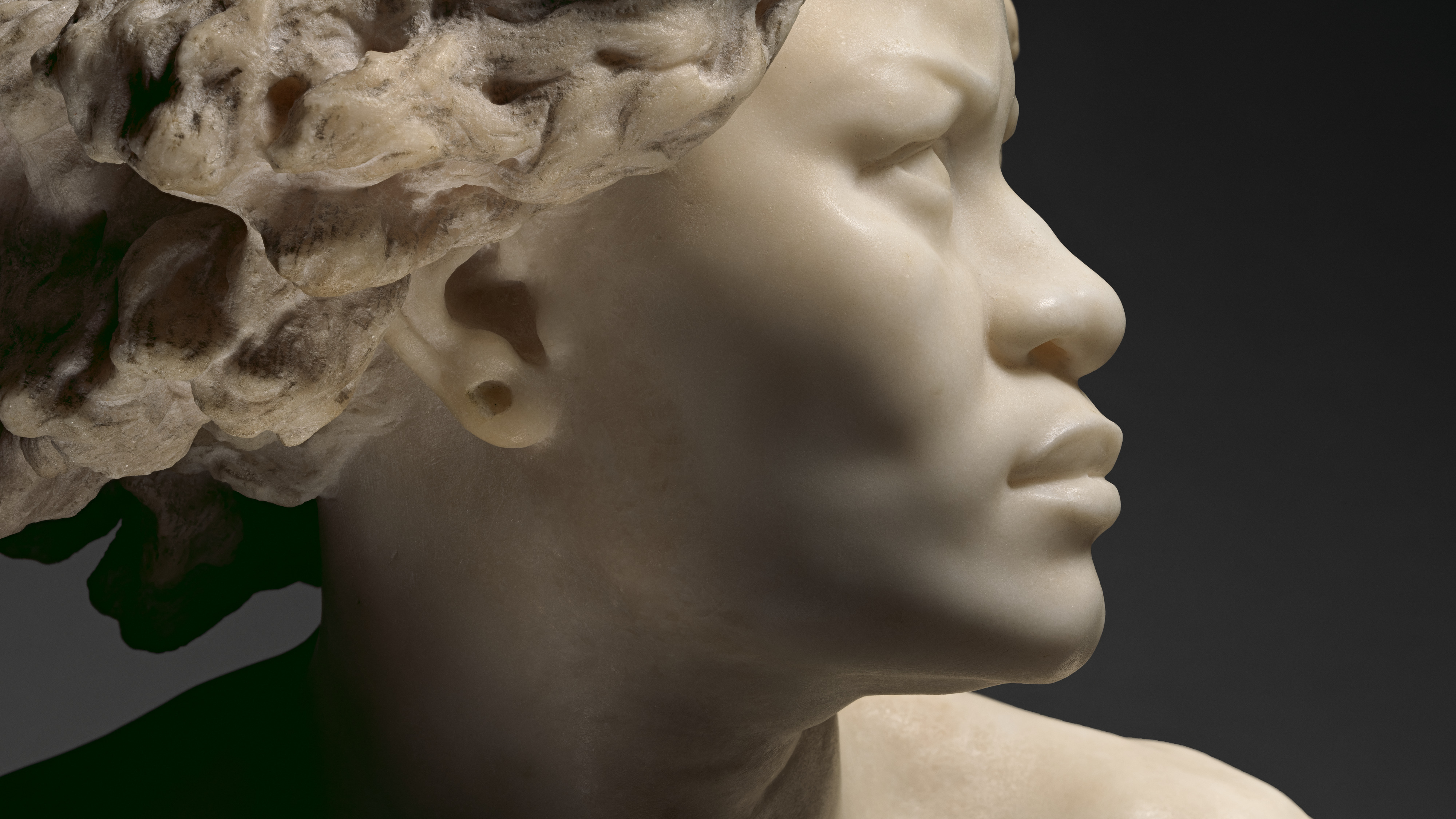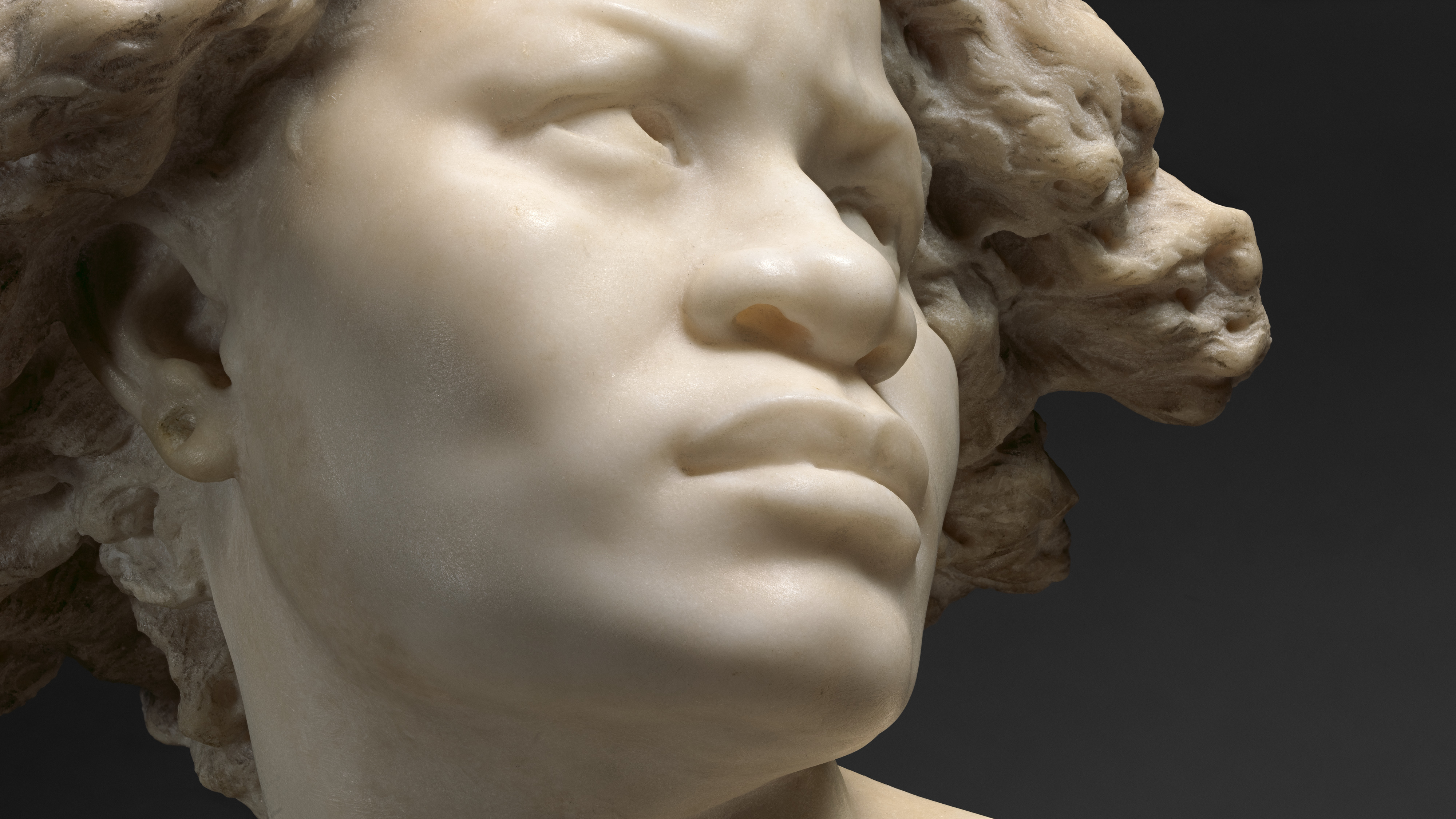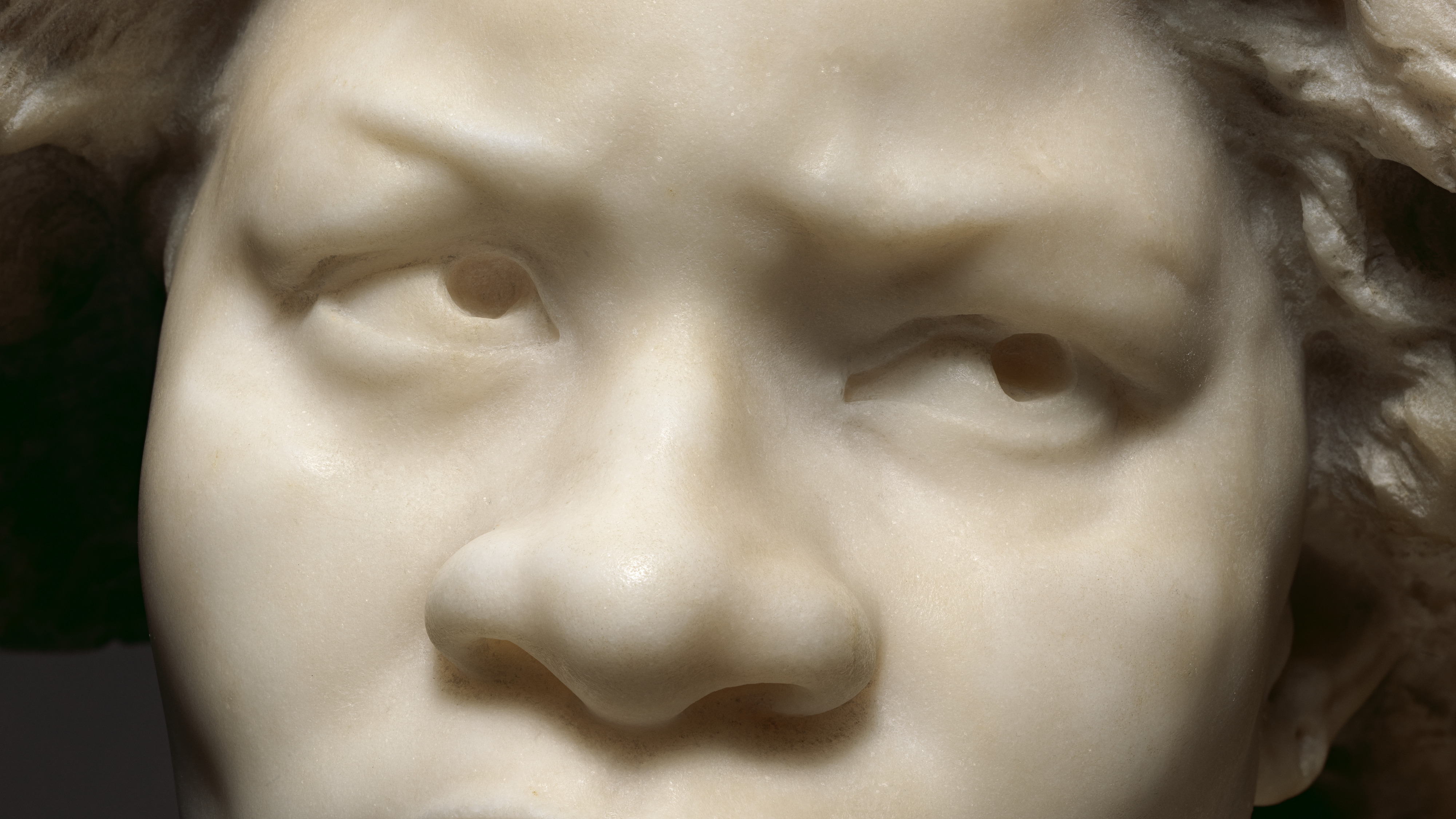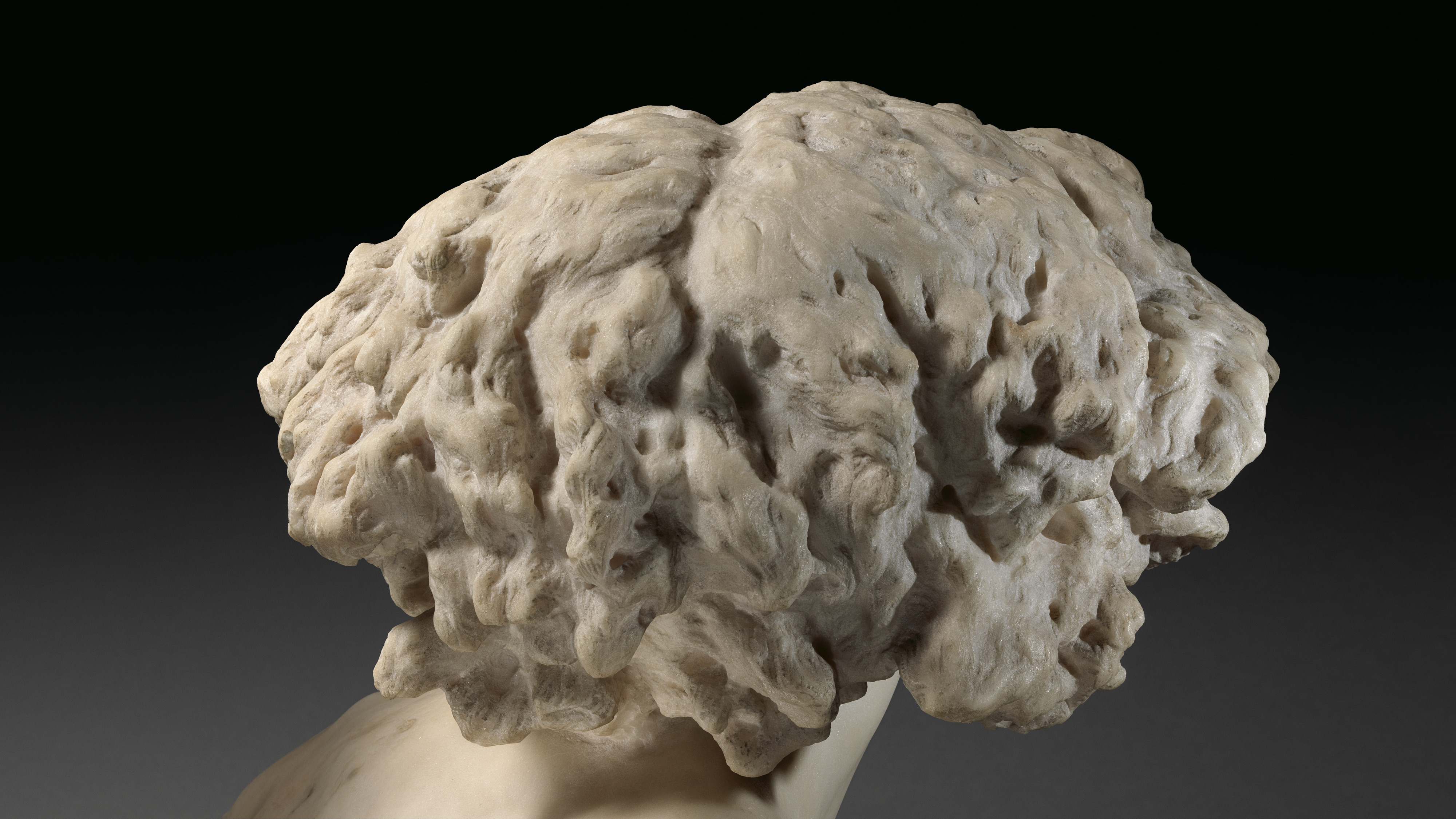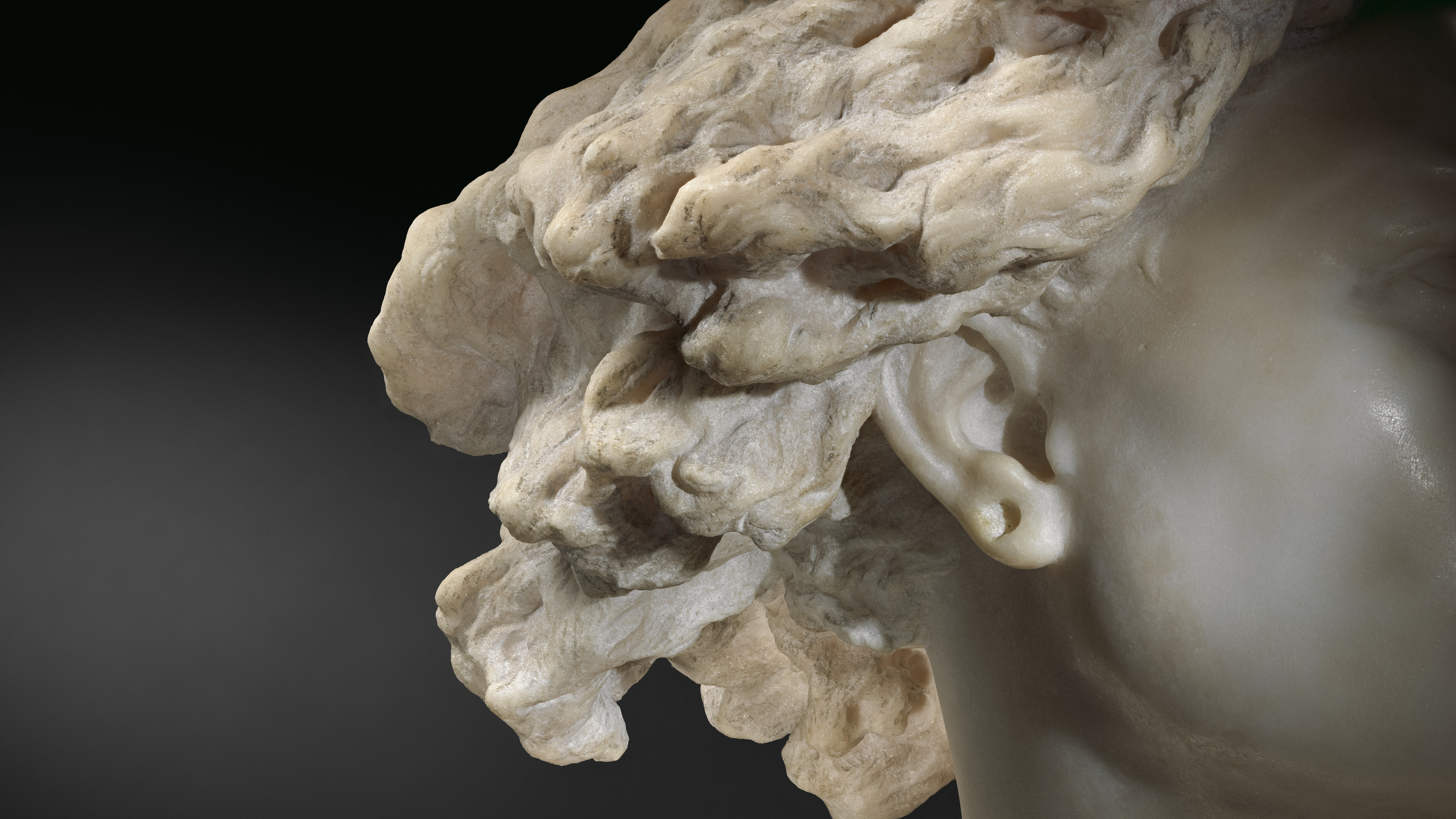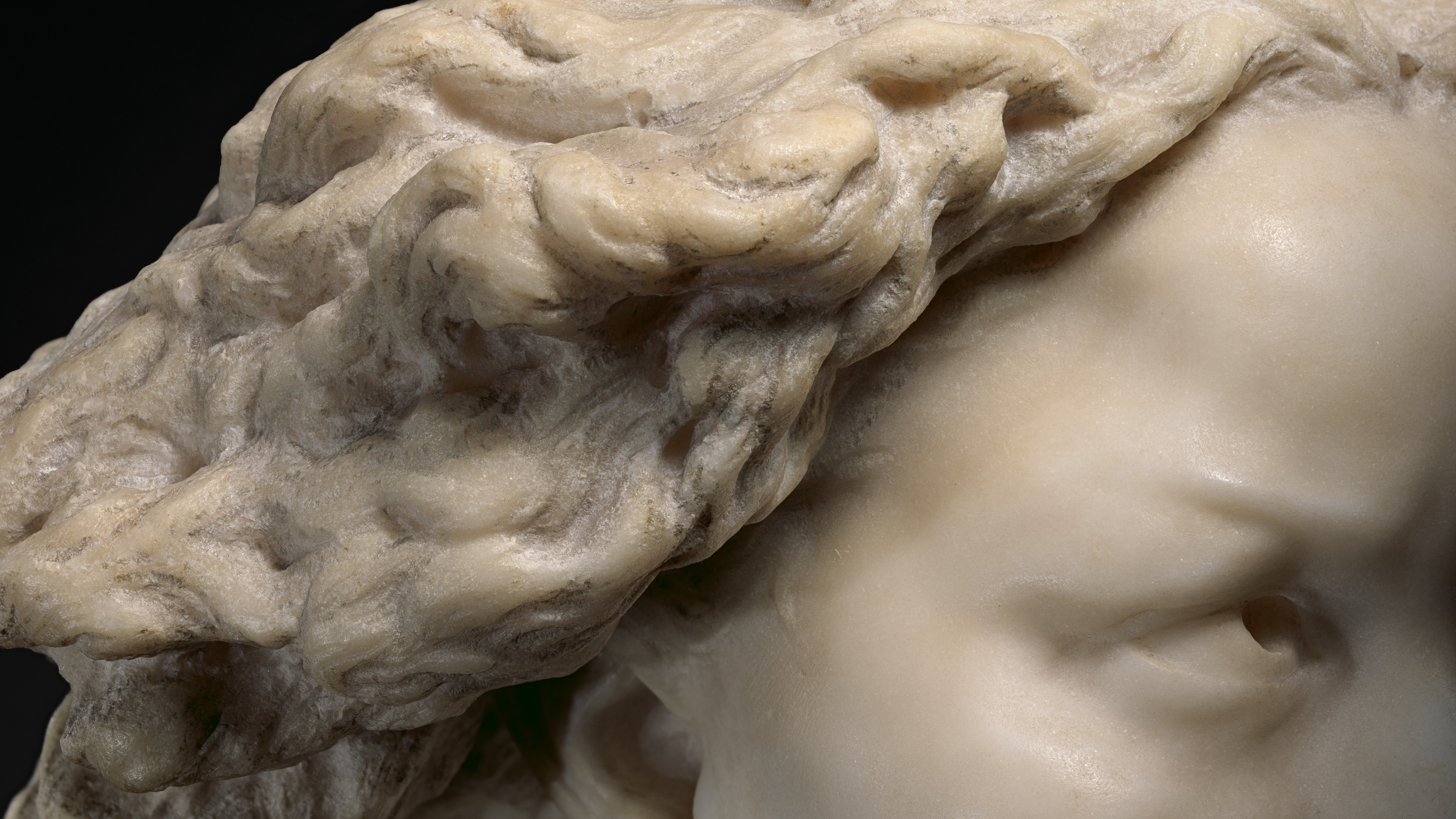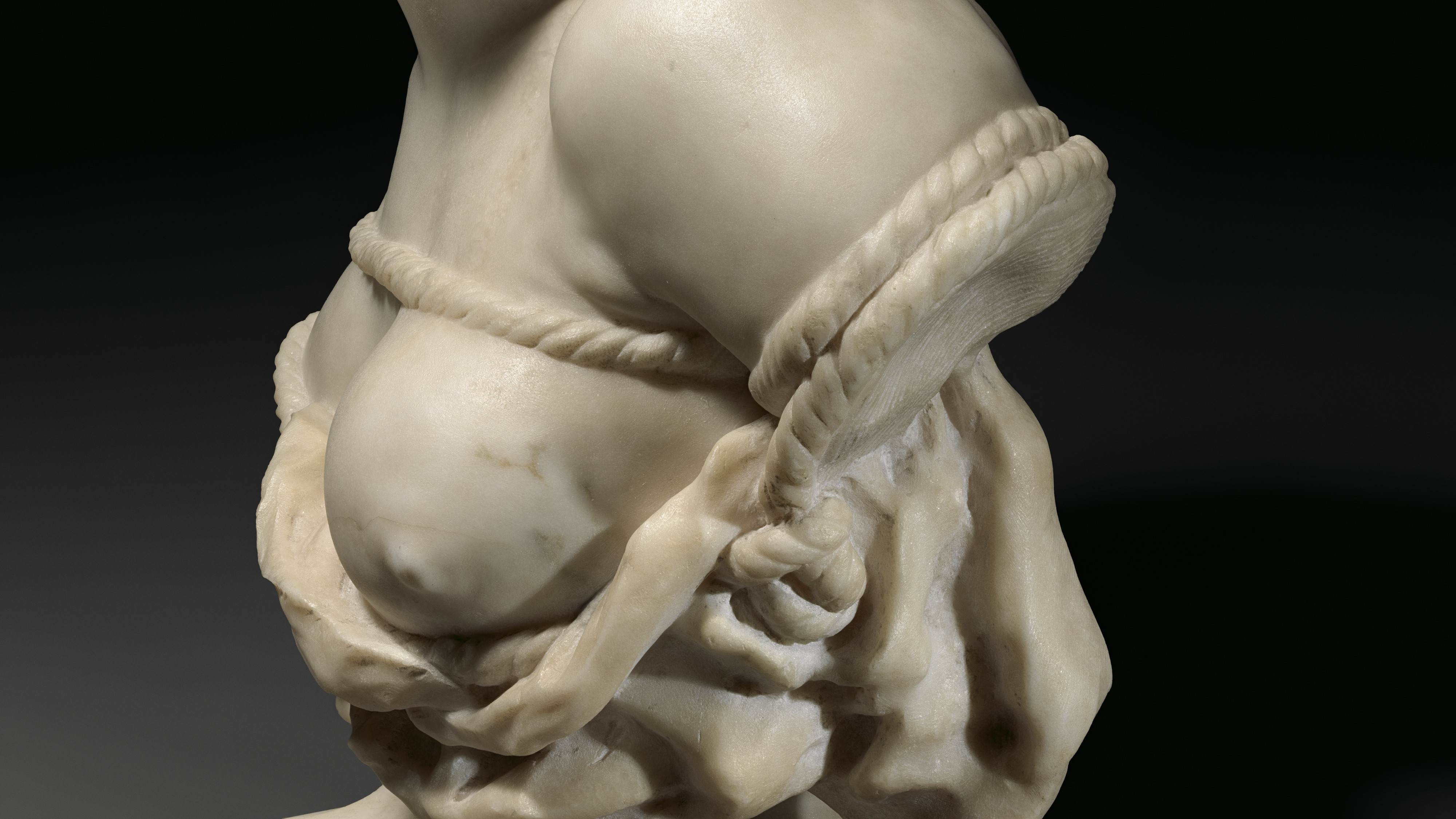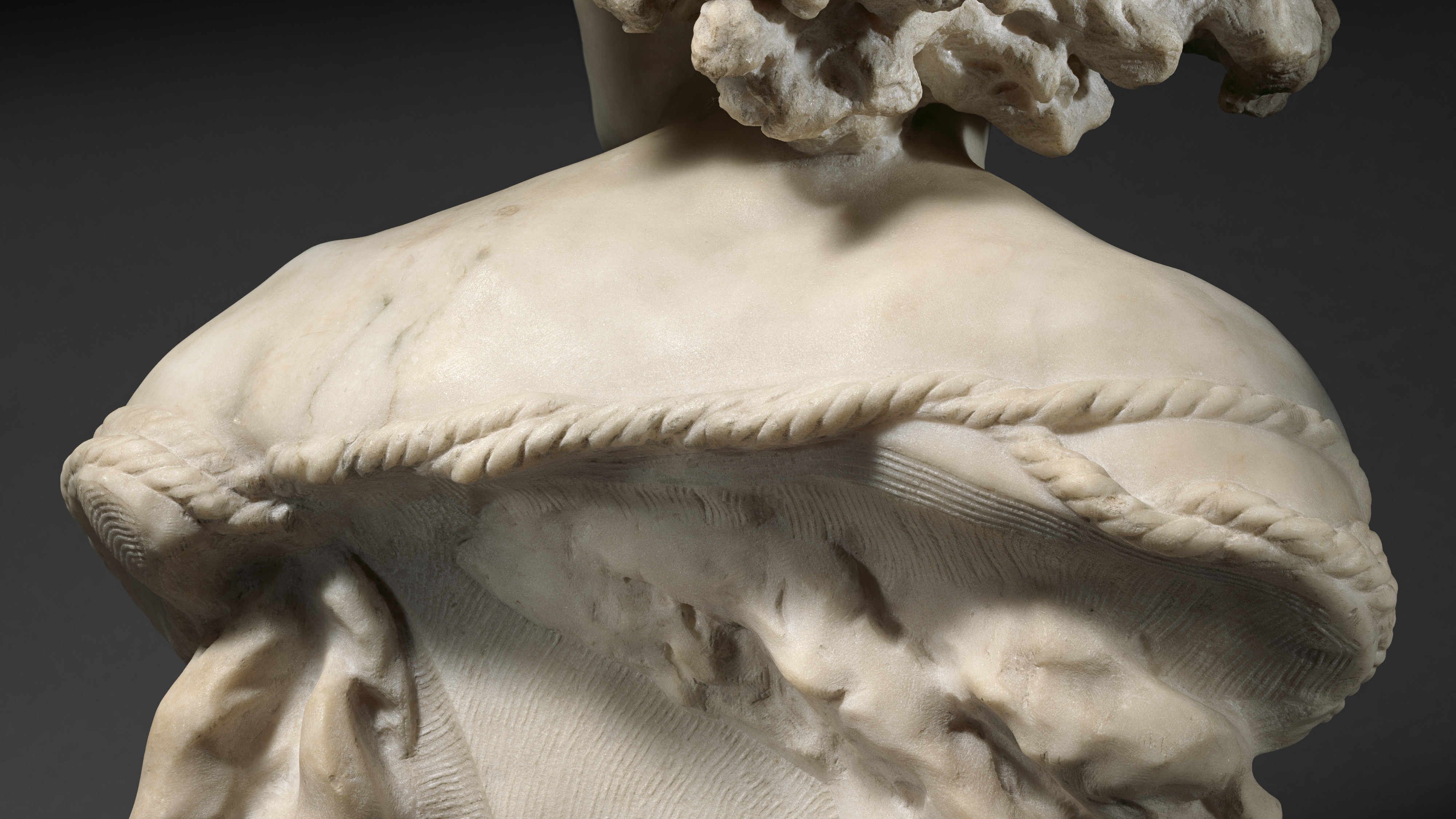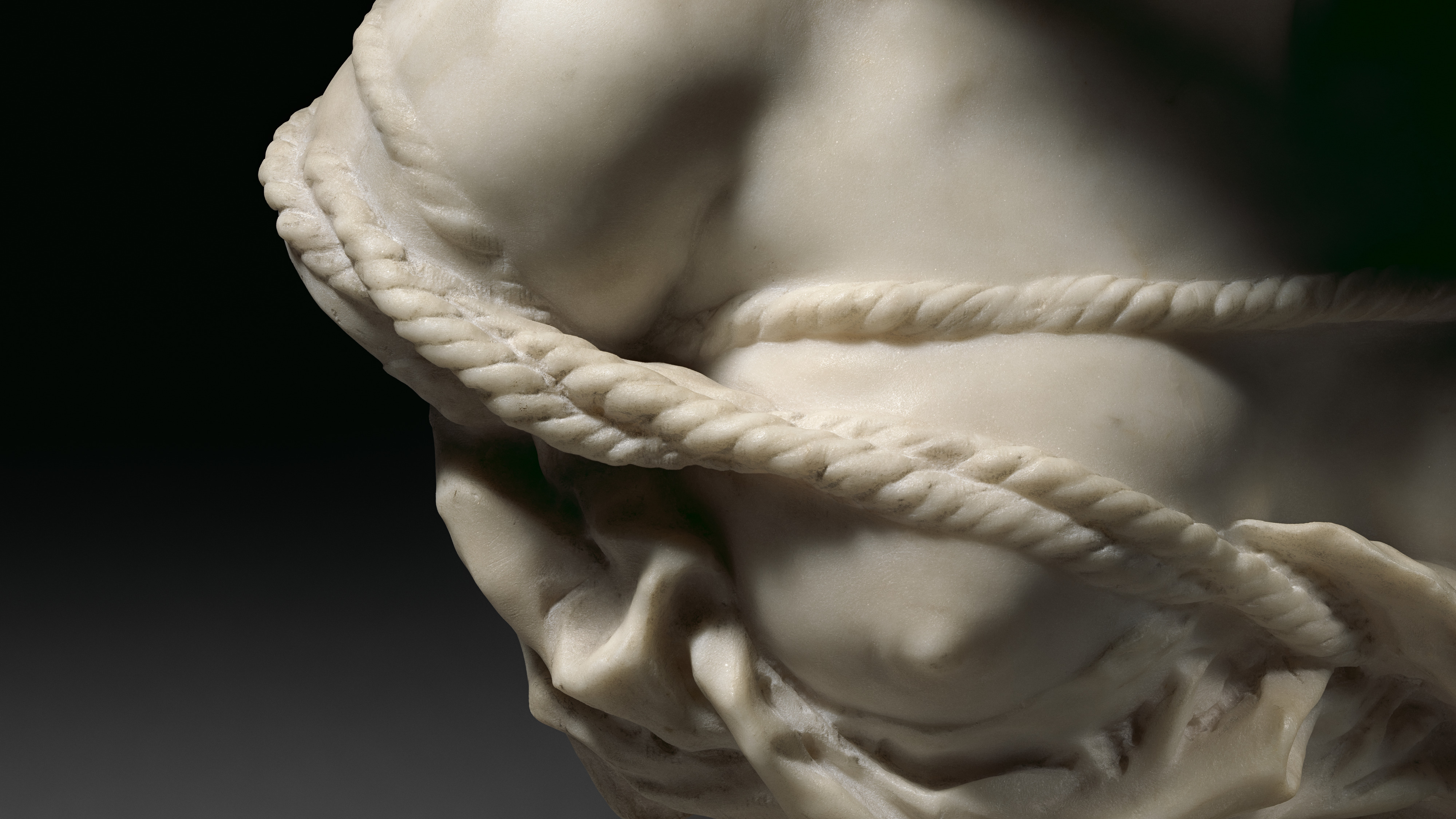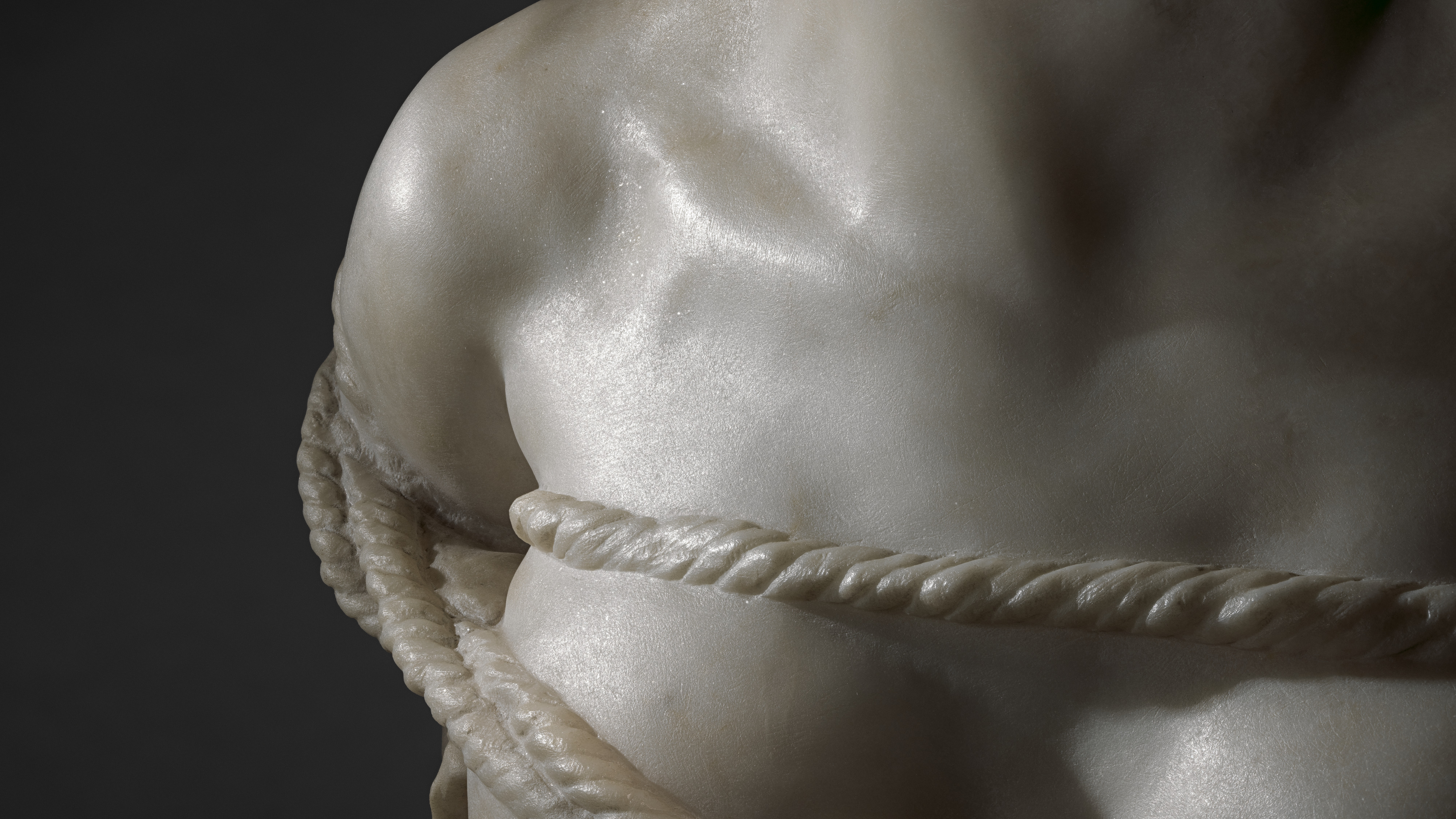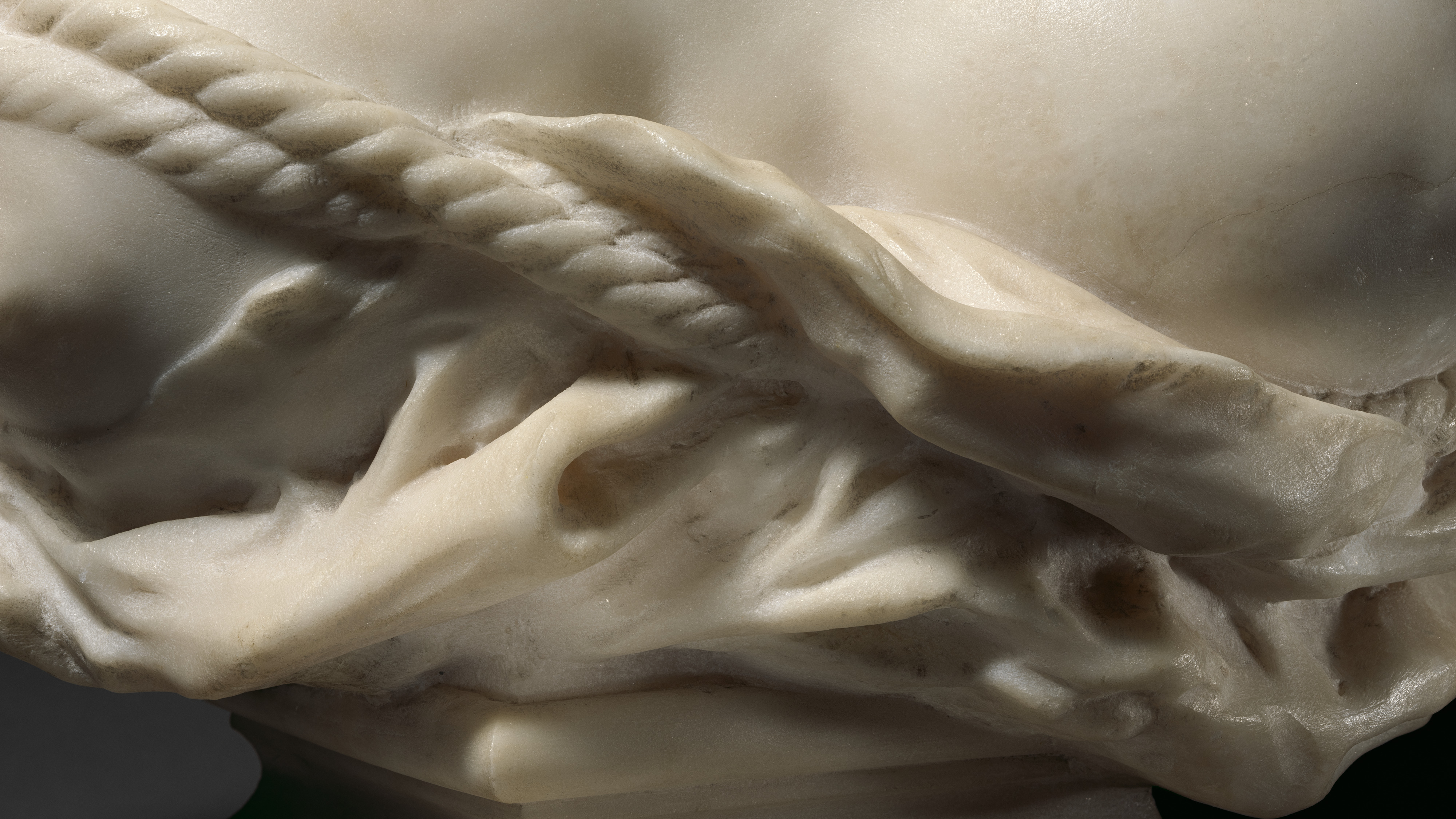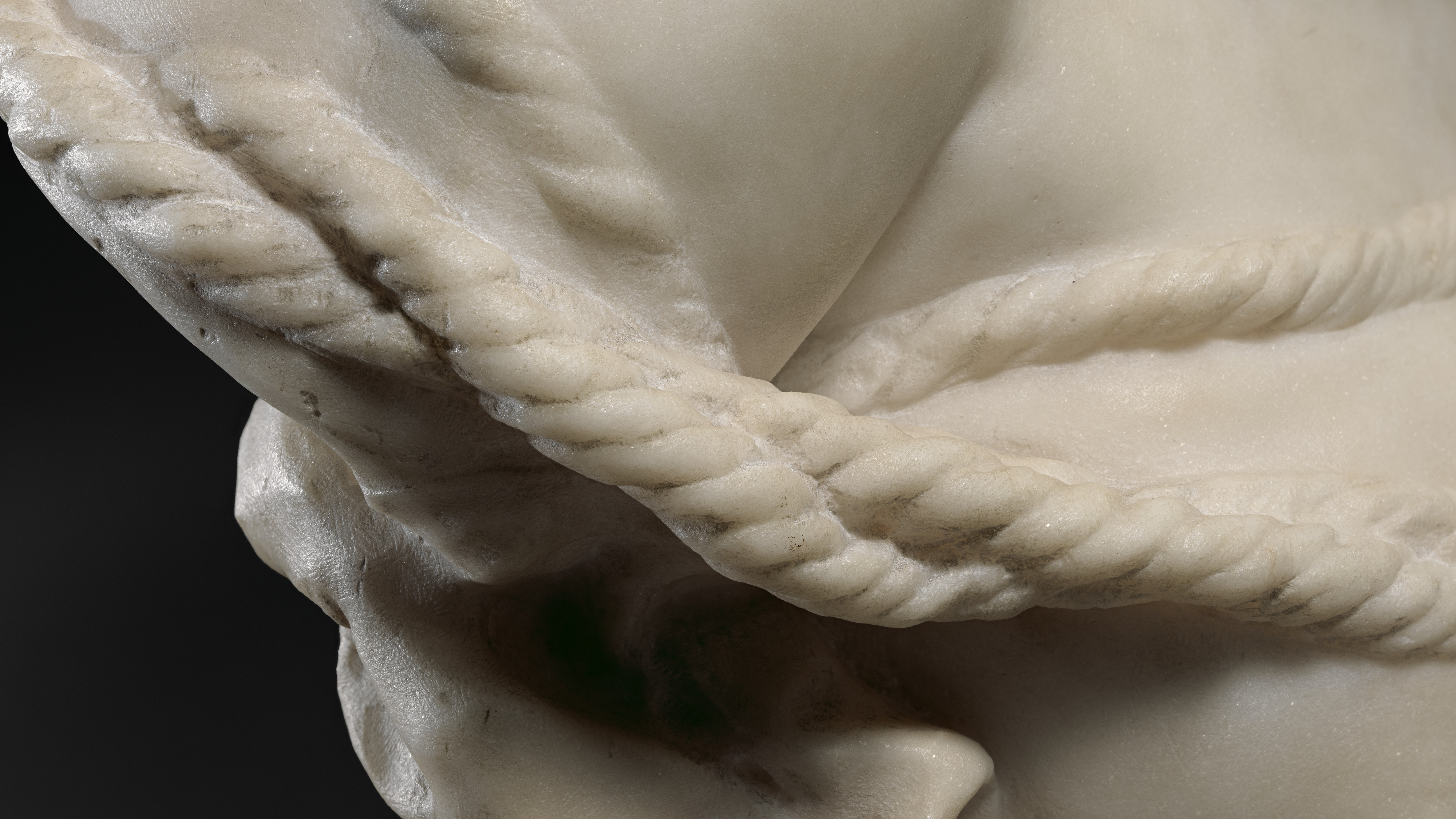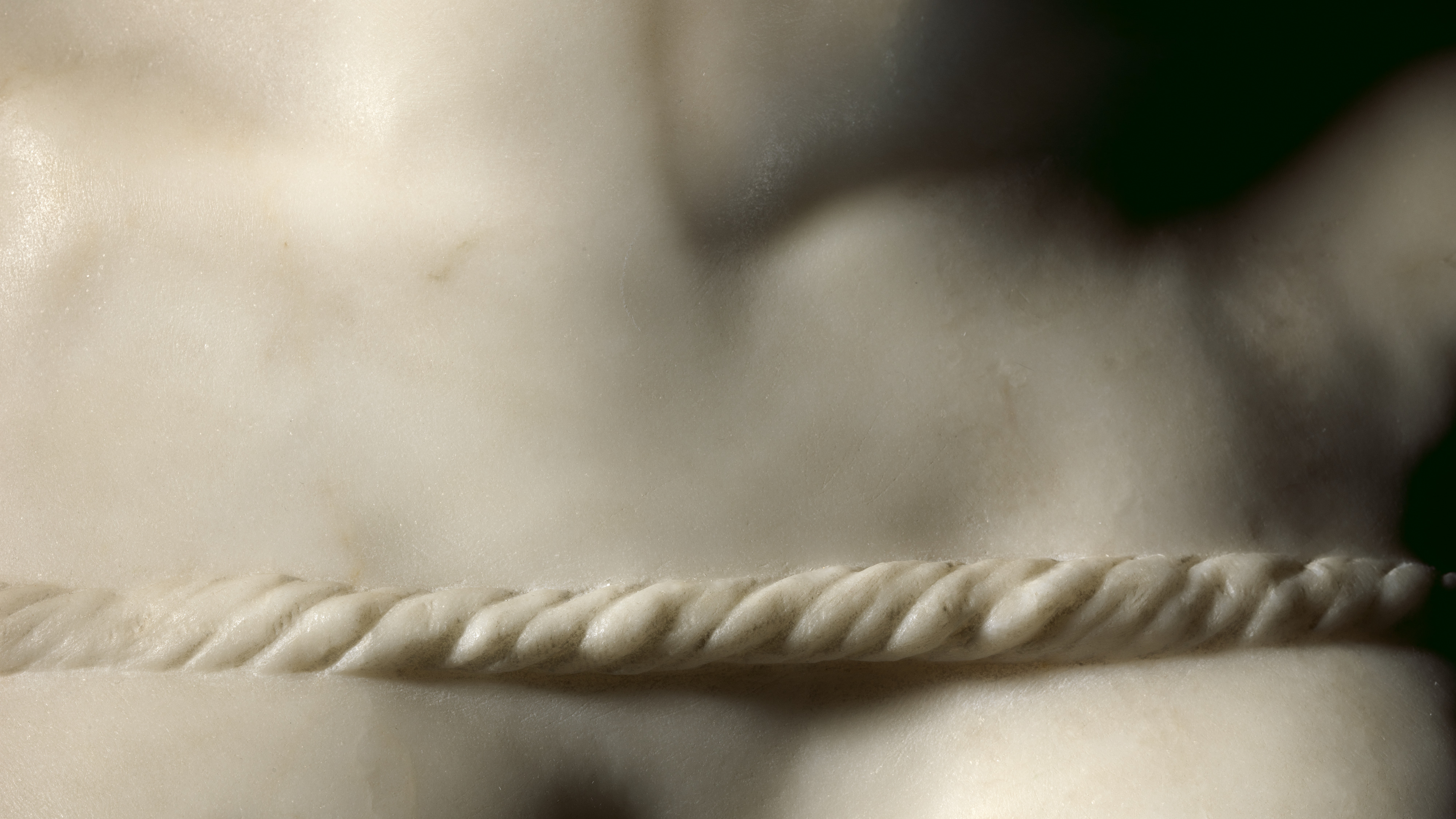Why Born Enslaved!
Jean-Baptiste Carpeaux French
This bust is perhaps the most well-known nineteenth-century sculpture of an enslaved Black figure. A virtuosic display of artistic achievement, the composition was modeled after an unidentified woman whose features Carpeaux recorded in exquisite detail. Yet this bust is not a portrait. Rather, it depicts the Black figure as an enslaved and racialized "type." Created twenty years after the abolition of slavery in the French colonies (1848), the sculpture was debuted in Paris in 1869 under the title Négresse, a term that reinforces the fallacy of human difference based on skin color. The subject’s resisting pose, defiant expression, and accompanying inscription – "Pourquoi Naître Esclave!" (Why Born Enslaved!) – convey an antislavery message. However, the bust also perpetuates a Western tradition of representation that long saw the Black figure as inseparable from the ropes and chains of enslavement. The present bust is one of only two known versions carved in marble.
Due to rights restrictions, this image cannot be enlarged, viewed at full screen, or downloaded.
This artwork is meant to be viewed from right to left. Scroll left to view more.
